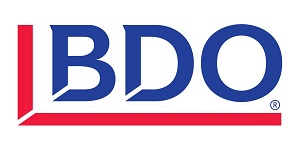Many, if not most, nonprofit organizations will encounter board or leadership turbulence at some point in their lifecycles. Organizational transition, the evolution of mission or executive departures are inevitable. There are times when the board must make challenging decisions and protect the organization from financial and organizational risk, as well as potential reputation damage.
While the “transformational event” is often unplanned, the consequences don’t have to derail the organization’s programming, future plans or ability to successfully carry out its mission. There are a number of different methods and tools to address management hiccups and leadership transitions, as well as concrete steps boards and executives can take to minimize risk in the event of a transformational event.
 To illustrate this, let’s examine a few scenarios:
To illustrate this, let’s examine a few scenarios:
- Mission friction: A large national leadership and support organization for a variety of local chapters recently began pursuing a strategic partnership with another organization to expand its technical capabilities. Local chapters find the joint fundraising approach proposed by national leadership doesn’t support their priorities and programming at the ground level. There are also concerns in the chapters around increases in executive compensation, coupled with decreases in spending on certain service offerings national leadership believes no longer align with the organization’s broader mission. Some chapter advocates worry this tension could escalate if the strategic partnership moves forward.
- Succession stress: A longtime CEO at a small research organization affiliated with a regional chain of hospitals has just been diagnosed with a severe medical condition requiring him to accelerate his retirement plans. The organization had begun preliminary preparations for their leader’s eventual retirement to plan and protect themselves from risk, but they lack a thorough succession plan and immediate action steps in the event of a departure as sudden as this one.
- Fragmented leadership: A foundation associated with a prominent, wealthy philanthropist that has national operations recently grappled internally with discord around its grantmaking practices and priorities. While the organization has yet to institute significant changes, leadership is at a crossroads and it’s likely the board will need to step in to determine future direction. The CEO is threatening to step down, which could likely spur press interest and generate significant negative publicity.
In order to build the right toolkit for forging a path through common transformative events like these, organizations need first to understand the various reasons the disruption occurs.
Mission friction
Because many nonprofits operate on leaner budgets and resources than for-profit companies, keeping up with a rapidly evolving business landscape and the rise of technology as both a tool and a potential threat can be extraordinarily taxing. Some organizations are better able to navigate this than others. In some cases, like the one mentioned above, a joint venture, merger or acquisition with an organization that has technology infrastructure, or staff with certain expertise, can be the best path forward. However, expanding the organization’s capabilities can come at a high cost in the form of executive compensation and a new set of stakeholders to consider, which saddles the board with a challenging cost-benefit decision.
On the flip side, organizations reconsider the specifics of their mission or programming if they’re facing financial difficulties or are running a deficit. In cases like this, nonprofits may not have adjusted spending in certain areas, like employee benefits, despite slowing cash flow. The organization may also have expanded its programming and services into areas that no longer make sense given the marketplace, staffing or the needs of the community.
Some organizations encounter tension between founders and the board when a reconsideration of mission takes place – coined “Founder’s syndrome.” Passionate, dedicated founders can be reticent to embrace certain changes in favor of the way things have always been done. The introduction of new board members with different perspectives can also serve as a conduit to bring issues and conflicts bubbling up to the surface.
During times of friction around a nonprofit’s mission, it’s critical that the board is educated on the issues at hand, as well as the consequences of each potential outcome and of inaction. Leadership also needs to have a dynamic vision of the organizations future, and be willing to pivot if need be. From there, leadership may need to work with certain individuals at the board level to build consensus so that a risk mitigation plan, as well as a longer-term action plan, can be agreed upon and implemented.
Succession stress
Succession planning is a moving target for nonprofits of all sizes and sectors. This is due in large part to the approximately 4 million baby boomers reaching retirement age each year, according to Pew Research Center statistics. While many are staying in the workforce longer than previous generations, the mass exit of experienced professionals, many of whom hold positions at the executive level or on boards, exposes some nonprofits to added personnel-related risk.
As a result, conversations around succession planning should shift from focusing on if a departure will happen, to when. Executive retirement can be planned, or, as we discussed above, it can happen quite suddenly. Regardless of the scenario, few things rock the boat like an executive departure. When considering your organization’s future growth and long-term plans, it’s important to proactively factor in succession planning. Depending on the size and scope of the organization, this may include a variety of tactics.
The succession plan may need to consider a potential gap between the current CEO and the successor and how workflow might need to be managed among other members of the leadership team, board and staff, as well as other practical details around the outgoing CEO’s exit and onboarding the new CEO. One stumbling block nonprofit organizations are particularly vulnerable to is a gap in relationship or partnership management with key stakeholders and donors.
The best way to mitigate the aftershock of a sudden departure is to ensure there is an up-to-date job description for the executive’s position. To develop this, the board should consider what skill sets are required for the executive to be successful in that role. Larger organizations might establish a transition team tasked with creating a transition plan, managing priorities, decision-making and communicating across the organization and to stakeholders.
Establishing a relationship with a search firm before the need arises can ensure the organization doesn’t have to vet search firms before beginning the candidate search, cutting down on overall hiring time. Executive hiring can take anywhere from six months to a year, in some cases, so the board will need to develop an interim plan in case a successor isn’t immediately found. To bridge the gap during this period, the board should also consider whether there are other executives or board members who could hold the position or absorb the key duties of the role until the organization finds the right permanent replacement.
Fragmented leadership
In the case of discord around financial priorities, the organization will need to ultimately choose where to allocate its resources—a tough decision that will likely land in the hands of the board. This is especially challenging if board members also have competing definitions of the organization’s mission and the purpose and goals of its grantmaking. The organization will also need to consider the impact of each possible outcome on its reputation.
There are several proactive steps nonprofits can take to unify leadership around the strategy driven by the board. In the example outlined above, the organization’s leadership could submit the pros and cons of each strategy to the board for consideration. The analysis should include the impact upon the organizations finances, the impact upon its mission and potential reputational risks.
While there are many avenues for tackling a disruption at the executive level, organizations might consider bringing in a “transformational leader”. This individual would serve as a resource to educate key internal stakeholders, manage expectations and institute a plan of action for navigating and rebuilding consensus among leadership and the board. If an executive departs as a result of leadership fragmentation or evolution of mission and programming, this resource could also support the organization in development of a succession plan or communications plan.
The right brass-tacks qualifications each nonprofit organization will need in this leader are as wide and varied as the sector itself. In some cases, it might be beneficial for the individual to have a background in for-profit business. Alternatively, membership organizations, particularly in the medical or technology industries, might prioritize certain credentials that are required among members, to ensure leader has credibility.
What tools do boards need to make the best decisions?
Above all, culture matters. A board that embraces change as an opportunity rather than an obstacle will enjoy smoother sailing during a rocky transformation of any kind. Arming the board to navigate uncertainty and inevitable change begins here. From there, in order to equip the board with the strongest toolkit possible for forging ahead through a transformational event, organizations should plan ahead by creating and maintaining key resources.
- Board manual that members can reference during a transformational event. This should include standard documents, including the mission, strategic plan, bylaws and other important literature on the organization’s capabilities and services. When faced with difficult decisions, it’s important that board members have these resources close at hand to help them align their decision-making with the organization’s priorities.
- Training to engage new and established board members. This training should cover key items included in the board manual, and set a tone for the relationship between the board and executive leadership. Additionally, organizations may consider annual workshops to build the board’s level of comfort with one another as well as their ability to collaborate to make decisions and reach consensus.
- Information on relationships with key outside consultants and service providers, including staffing firms, financial managers and other resources. This will help ensure that all board members, not just the board chair, are equipped to deploy those resources should the need arise.
- Board-approved succession plan, including caveats for various situations that could arise during an executive transition. This should include job descriptions for all leadership positions. During the development of this plan, the organization should identify and build a relationship with hiring and staffing resources, so that they can get familiar with the organization and its needs. This ensures they can be tapped quickly in the event of an unforeseen departure or transition. The succession plan might also include a list or information on the key relationships or partnerships managed by executives. To prevent gaps in relationship management during an executive transition, organizations can encourage shared ownership and an open flow of information so that key relationships don’t become siloed with one individual.
- Step-by-step communication roadmap for navigating transformation and reputation management, including tools for presenting and discussing the event with various internal and external stakeholders and, if applicable, the media and public. The plan should include a list of key stakeholders who should be kept apprised of any leadership issues, as well as basic drafted language that can be filled in and adapted for use in a variety of situations.
While transformational events can arise from a wide breadth of causes and events, they all pose unique challenges to nonprofit organizations and require careful consideration of the risks in play and the right path forward. Boards that have developed contingency plans, and are able focus on efficiently reaching consensus and pivoting when necessary, will be well-prepared to navigate the shifting tides they will inevitably face.
Laurie De Armond is an Assurance Partner and Co-Leader of BDO’s national Nonprofit & Education practice with more than 20 years experience providing audit and consulting services to a wide variety of tax-exempt organizations.





